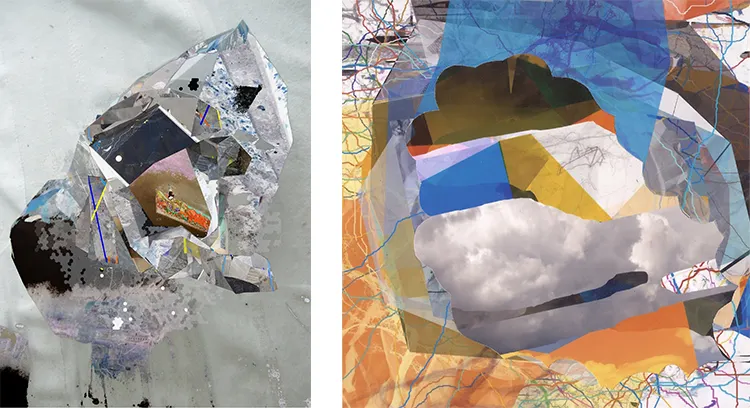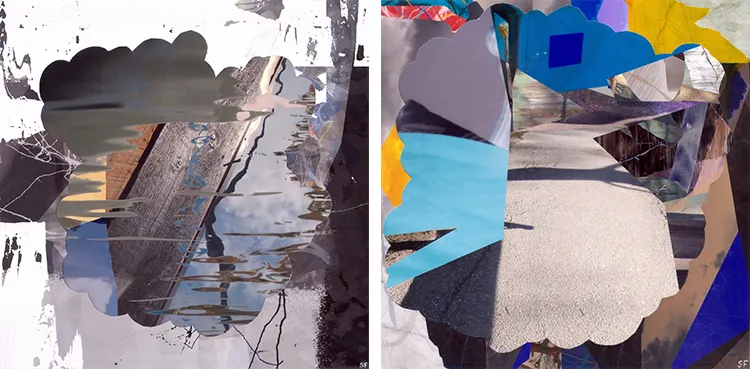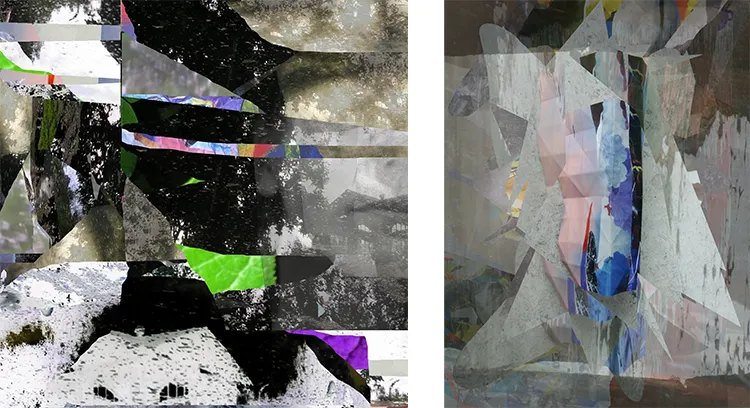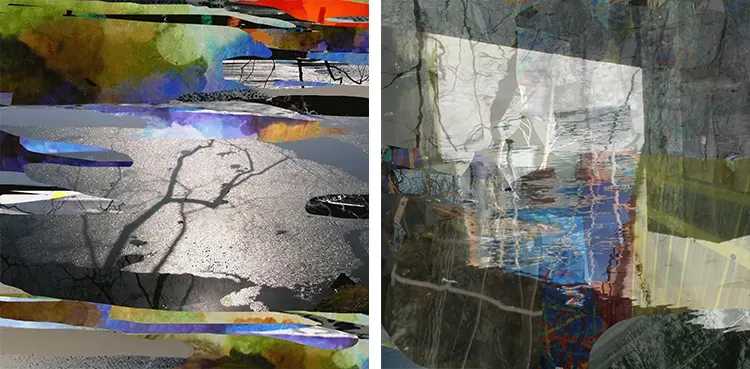“Art should speak for itself, has been my thought throughout my career, and I hope that it shows in my own work.”
A Northern Perspective: The Origins of a Creative Vision
Born and raised in Umeå, a city in northern Sweden, Stefan Fransson developed an early fascination with the interplay of light and the changing seasons. The dramatic contrast between the long, dark winters and the brilliant summer nights shaped his perception of color, space, and atmosphere. While many associate winter with a monochrome landscape, Fransson saw a rich palette reflected in the snow—shifting hues dictated by the sky. This sensitivity to light became a defining element in his artistic journey, fueling an interest that would evolve beyond painting and drawing into the realm of three-dimensional form.
Fransson’s artistic inclination emerged in childhood, where he devoted himself to sketching and painting. As he matured, he felt a growing curiosity about sculpture, drawn to the tactile experience of shaping materials. The ability to manipulate space and volume gave him a new way to express his vision, leading him toward a career that would merge both two- and three-dimensional explorations. However, it was a pivotal experience in his school years that set him on the path to becoming a professional artist.
A teacher who recognized his talent played a crucial role in his artistic development. Encouraged to exhibit his work in the school corridor, Fransson received his first review in the student newspaper—a moment that solidified his resolve to pursue art seriously. He enrolled in an art school in his hometown, where he encountered inspiring mentors and had the opportunity to travel to London for a study trip. The city’s artistic energy captivated him, prompting him to apply to an art school there. After two years in London studying sculpture, he returned to Sweden and was accepted into the Royal Academy of Art in Stockholm. Over five years, he honed his craft and earned a Master’s degree, equipping him with the skills and vision that would define his career.

Stefan Fransson: A Fusion of Styles and Perception
Fransson resists categorization when it comes to artistic style, preferring to let intuition guide his work rather than adhering to a rigid framework. His creations exist at the intersection of multiple artistic movements, incorporating elements of abstract expressionism, surrealism, and other influences. He values authenticity above all, aiming to capture moments of personal perception rather than premeditated themes. Often, he only recognizes the underlying narratives in his work once a piece is completed, reflecting an organic creative process where meaning emerges through action rather than intention.
One recurring motif in his work is the landscape—both the external world and an internal, emotional terrain. His compositions frequently blend these two realities, forming abstracted environments that oscillate between familiarity and ambiguity. This concept extends into his sculptural work, where he approaches form as a form of spatial drawing. His sculptures, often created with minimal tools, embody a raw, gestural quality akin to sketches brought into three-dimensional existence. By embracing a direct and unfiltered mode of creation, Fransson captures the essence of movement and fluidity within static forms.
His workspace is an essential part of this process. He maintains a studio outside Stockholm, where silence and simplicity allow him to fully engage with his materials. Working with straightforward tools enables him to maintain a spontaneous, almost primal connection to his craft. Whether shaping sculptures or developing new techniques that merge digital and analog methods, he seeks to maintain an immediacy in his work. This approach aligns with his belief that visual language should speak for itself, distinct from verbal or written expression.

The Artistic Mindset: Flow, Influence, and Innovation
For Fransson, the act of creating is a deeply immersive experience. He enters a state of concentration known as “Flow,” where time and external distractions fade into the background. This focus is so integral to his process that even his neighbors respect it, understanding that his engagement with art requires an uninterrupted mental space. While his rural studio offers the solitude necessary for sculptural work, his Stockholm apartment serves a different function. There, his computer becomes the primary tool, allowing him to explore digital techniques and experiment with photography-based projects. Whether traveling or at home, he continuously gathers inspiration from his surroundings, using his camera as a means of collecting visual material for future works.
His artistic influences reflect his appreciation for direct, visually compelling expression. He cites Pablo Picasso, Alberto Giacometti, Anthony Gormley, and Swedish artist Curt Asker as key figures who have shaped his perspective. What he admires in their work is an ability to communicate through form and composition without reliance on textual explanation. This belief has guided his career, reinforcing his commitment to letting art stand on its own. Asker, in particular, left a lasting impression on him—especially a period in which the artist used the sky as his workspace. By releasing kites bearing geometric and abstract designs, Asker transformed the air into a dynamic composition, making the invisible visible. This concept of redefining space and perception resonates deeply with Fransson’s own approach to art.
Innovation is a constant in his practice, particularly when it comes to technique and medium. He frequently experiments with hybrid processes, blending digital and physical methods to push the boundaries of his work. One such approach involves printing digital collages, then physically altering them with scissors before reworking them by hand. By merging digital precision with analog spontaneity, he creates layered pieces that challenge the distinctions between different artistic disciplines.

Stefan Fransson: Expanding Horizons in the Art World
With a wealth of work ready to be shared, Fransson is currently focused on finding the right platforms to showcase his creations. His digital works frequently appear in international art fairs, providing exposure to a global audience. However, he is equally eager to exhibit more of his collages—both digital and traditional—both within Sweden and abroad. The challenge lies in identifying venues that align with his vision, as he seeks spaces that allow his work to be experienced in its full depth and complexity.
His artistic journey has taken him across Europe, often with nothing more than a laptop as his primary tool. This period of travel reinforced his adaptability and further expanded his creative possibilities. The ability to work digitally has provided him with a new level of mobility, enabling him to develop and refine his ideas regardless of location. Even now, he continues to explore new ways of integrating technology with traditional artistic techniques, ensuring that his work remains dynamic and ever-evolving.
Beyond exhibitions, Fransson remains engaged with the broader artistic discourse, constantly seeking inspiration from both established masters and contemporary creators. His work reflects an ongoing dialogue between past and present, tradition and innovation. Whether through sculpture, painting, or digital media, he remains committed to exploring the fluid intersection of styles and ideas. As he continues to push artistic boundaries, his work stands as a testament to the power of visual expression—an art form that speaks in its own language, beyond words.








